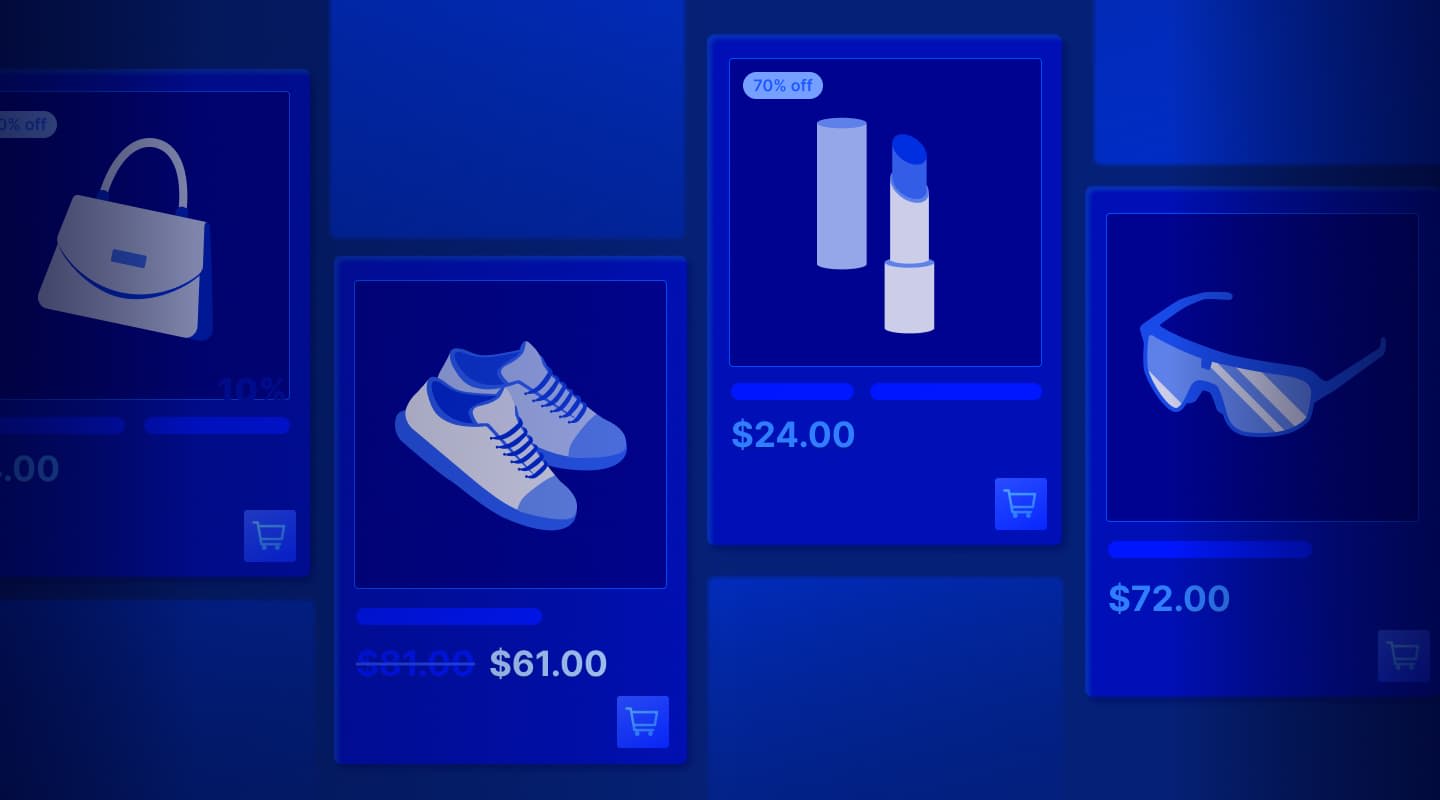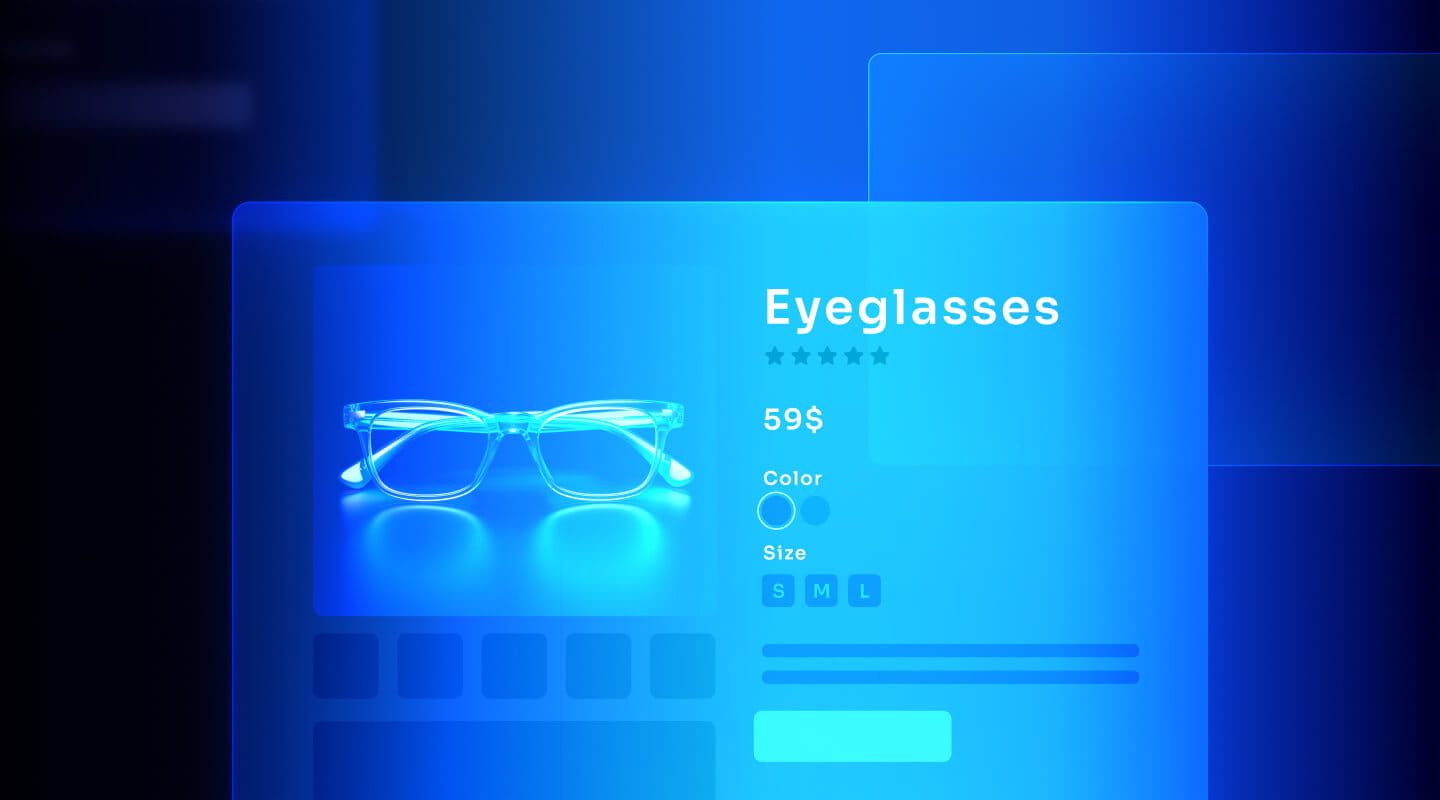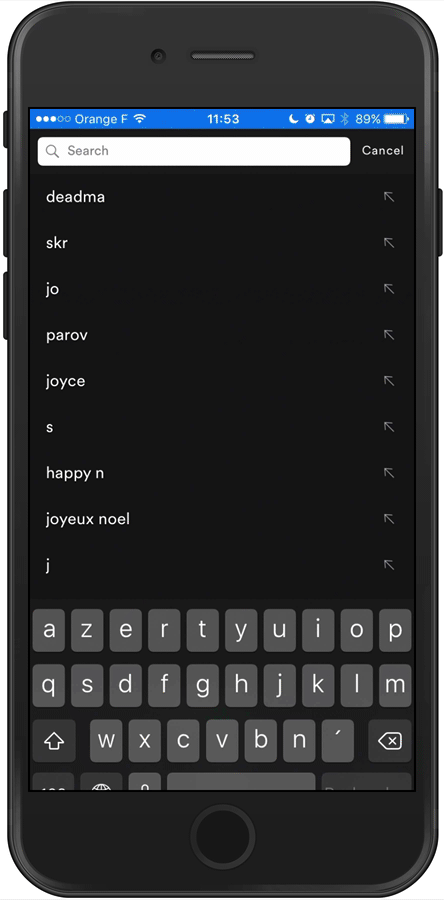Add InstantSearch and Autocomplete to your search experience in just 5 minutes
A good starting point for building a comprehensive search experience is a straightforward app template. When crafting your application’s ...
Senior Product Manager

A good starting point for building a comprehensive search experience is a straightforward app template. When crafting your application’s ...
Senior Product Manager

The inviting ecommerce website template that balances bright colors with plenty of white space. The stylized fonts for the headers ...
Search and Discovery writer

Imagine an online shopping experience designed to reflect your unique consumer needs and preferences — a digital world shaped completely around ...
Senior Digital Marketing Manager, SEO

Winter is here for those in the northern hemisphere, with thoughts drifting toward cozy blankets and mulled wine. But before ...
Sr. Developer Relations Engineer

What if there were a way to persuade shoppers who find your ecommerce site, ultimately making it to a product ...
Senior Digital Marketing Manager, SEO

This year a bunch of our engineers from our Sydney office attended GopherCon AU at University of Technology, Sydney, in ...
David Howden &
James Kozianski

Second only to personalization, conversational commerce has been a hot topic of conversation (pun intended) amongst retailers for the better ...
Principal, Klein4Retail

Algolia’s Recommend complements site search and discovery. As customers browse or search your site, dynamic recommendations encourage customers to ...
Frontend Engineer

Winter is coming, along with a bunch of houseguests. You want to replace your battered old sofa — after all, the ...
Search and Discovery writer

Search is a very complex problem Search is a complex problem that is hard to customize to a particular use ...
Co-founder & former CTO at Algolia

2%. That’s the average conversion rate for an online store. Unless you’re performing at Amazon’s promoted products ...
Senior Digital Marketing Manager, SEO

What’s a vector database? And how different is it than a regular-old traditional relational database? If you’re ...
Search and Discovery writer

How do you measure the success of a new feature? How do you test the impact? There are different ways ...
Senior Software Engineer

Algolia's advanced search capabilities pair seamlessly with iOS or Android Apps when using FlutterFlow. App development and search design ...
Sr. Developer Relations Engineer

In the midst of the Black Friday shopping frenzy, Algolia soared to new heights, setting new records and delivering an ...
Chief Executive Officer and Board Member at Algolia

When was your last online shopping trip, and how did it go? For consumers, it’s becoming arguably tougher to ...
Senior Digital Marketing Manager, SEO

Have you put your blood, sweat, and tears into perfecting your online store, only to see your conversion rates stuck ...
Senior Digital Marketing Manager, SEO

“Hello, how can I help you today?” This has to be the most tired, but nevertheless tried-and-true ...
Search and Discovery writer
Where’s a local retailer that stocks the cool item you just found on your Apple iPhone? Where’s a top-notch local sushi bar, according to that “near me” app on your Android?
Searching for things ranging from products to restaurants to news articles on a mobile device is a basic activity for most people: Almost half of the web traffic in the United States (and more than half globally) is generated by people using mobile devices, according to Statista (2021). In addition to being able to find things when they’re out and about, people like using their mobiles to watch movies and videos (via mobile apps Netflix, Tencent, or Amazon Prime from the Apple app store), surf social media, and catch up on email.
Given this enduring reality, it’s imperative that success-focused companies have first-rate mobile apps. They need to provide a fast, smart, easy-to-use Search and Discovery experience.
Let’s be honest…is your mobile app a complete joy to use? Can people instantly find what they need? The way you design your mobile app can make all the difference in getting people to use and stick with it over the long term.
Mobile-search UX design and discovery presents some unique challenges:
Fortunately, there are proven ways to overcome these challenges and do everything from effectively position your search bar to optimally display your search results.
A mobile app designer’s mission comes down to three tasks: applying solid design concepts, ensuring excellent usability, and accommodating spotty connectivity. All of this must be determined while taking into account:
If you’re looking to create an outstanding user experience on a mobile device, there are various ways to nail it. Here are some industry experts’ secrets on creating a mobile Search and Discovery experience that rocks your users’ worlds, which can undoubtedly increase your conversion rate and kick your business up a notch.
With mobile, the #1 rule for displaying search results and data is “Less is more.” You want an easy-to-use design and layout for a small screen.
People should be able to quickly search for, find, and, if they’re in an eCommerce mobile app, buy an item using a small screen. You want to provide relevant content that doesn’t overwhelm people or require them to keep refining their search. You need the right nuggets of information with minimal text. It should be simple for users to access a second page of search results. And for content discovery that doesn’t necessarily require a search box, or that helps refine a search, your selection tools, such as toggles and sliders, should be intuitive.
Some mobile apps work best when users automatically start with a search bar, while in others, the open-ended nature of the content, such as with media content, makes browsing the most effective approach.
According to Denmark-based web UX research organization Baymard Institute, search bar size, placement, and level of contrast help establish how strongly searching is the “recommended” method of finding something. If search is relatively crucial, such as in an eCommerce app (studies show that shoppers who start by searching tend to convert better), a search bar is the right choice. If search is more optional, you can tone down its emphasis by substituting a clickable contextual search icon.
The next UI element to optimize is the search-transition screen—what users see before their search results show up. Design options:



Autocomplete suggests search queries as a user is entering search terms; when the phrase they want appears, they can simply tap it.
In Mobile Design Pattern Gallery (2014), Theresa Neil cites the importance of integrated autocompletion in enhancing mobile searching. If your autocomplete feature can also visually differentiate the mobile search engine’s suggestions, for example, by bolding the suggested terms being added to the user’s phrases, that’s even better.
Who hasn’t gotten annoyed by seeing that they just entered typo-riddled nonsense and gotten no results?
You can help users stay calm by using typo tolerance to guess user intent and catch text-entry and typing and spelling mistakes in real time as people enter queries:

You can anticipate what users want and provide search-as-you-type results, as well as help them figure out more specifically what they want by offering search query suggestions.
With query suggestions, which work well to drill down in large data sets, users don’t instantly see results as they’re typing; they’re instead shown popular or relevant queries. For example, if they enter “iPhone,” (below) the suggestions include phrases like “iPhone charger.”

If necessary, people using your app should be able to easily fine-tune their search results. You can make this happen by placing the search field containing the person’s entered query above their generated search results.
You can use faceted search to maximize small-screen real estate, letting searchers narrow their results by applying filters, typically by selecting options provided in a “tray”-style overlay.
Faceted search is popular with eCommerce retailers (and the mobile equivalent, m-commerce) and travel service providers, as well as in online search tools on media websites.
Professionalism goes a long way toward making an app user friendly, and one aspect of that is consistency. You don’t want users wondering why the search interface seems half baked; you want them to love seamlessly finding what they need.
Along these lines, the search bar should live in the same spot on every page in your app. And touch gestures used for things like expanding a map or scrolling through search results should operate the same way every time.
Do some in-depth QA on your app before you release it.
A cool new way of skipping tiny-screen frustration is searching by voice. In 2019, according to eMarketer, 40% of all U.S. Internet users were speaking queries on their mobile devices, so it might make sense for your app to include voice as a search option.
You can use AI tools that gather information from users to create eCommerce search tailored to your users’ needs. Only 1 in 8 online retailers are doing this, even though it can substantially increase conversion. For instance, based on what shoppers have already searched for, you can offer them recommendations for similar or complementary items, or refer them to local retailers’ brick-and-mortar stores where they could immediately pick up the item.
Hooray! Your user has some search results to look at. And now you’ll want to make sure everything is hunky dory here, too.
A good search experience must meet mobile users’ expectations of speediness. We’re all spoiled by ultra-high speed Google search. If you’re like most mobile users, you won’t tolerate a search that takes forever; you’ll just leave the app. And that’s a big problem: according to Inc., search abandonment costs eCommerce companies $300 billion a year.
How can you ensure speed? With the right tools.
How do your users want to view items? For products such as a pair of shoes or clothing, a photo is worth a thousand words.

If it makes more sense for you to emphasize specifications than photos, such as with restaurants, you can display details such as the type of food, price range, ratings, and distance along with a small picture.
In advanced search, filtering options are imperative in order to avoid cluttering the screen. You can use a scrolling filter bar, as Amazon does below, which accommodates an impressive number of filtering options:

A good filtering tool also “responds” when the user applies a filter. For example, the Airbnb app has a button at the bottom that informs the user of the number of search results when a filter is edited:

Because of the limited space on mobile devices, only the top search results are visible, so they’d better be relevant. You can evaluate your relevance by taking into consideration both textual and business ranking rules.
Most people on the move want to be able to quickly scan their search results. Highlighting, which helps people understand why they’ve gotten their particular results, is an effective way to allow scanning.
Standard highlighting, applied to exact matches of the query, works well when displaying instant search results:

Inverted highlighting calls out everything but the search query, making it easy to identify differences between suggestions. An excellent scenario for applying this is with query suggestions:

Network coverage is rarely perfect for mobile users–a fact mobile app design must take into account. The mobile search experience still has to be smooth. One way to let users know that their information will load ASAP is by providing a mobile search engine progress indicator, such as a ticking clock icon or progress bar.
Another way is to use a skeleton screen with placeholders:

A third idea is to use lazy loading, which prioritizes certain content and fetches the rest a little at a time as needed.
Mobile search is a dynamic field that’s continually changing as new technology, such as the ability to make AI-related recommendations and personalize the shopping experience in an eCommerce app, become available.
An effective mobile search app is an inherently powerful thing. By optimizing your mobile experience, you can improve your conversion rates and reduce your bounce rate, all without sacrificing content relevancy or integrity. While many companies have yet to optimize their mobile search apps, as they do, and as their users are delighted, mobile search is sure to become an even more enjoyable activity, as well as a profitable one for businesses.
Contact us at Algolia today so we can help you set up an amazing mobile user experience.

Powered by Algolia Recommend